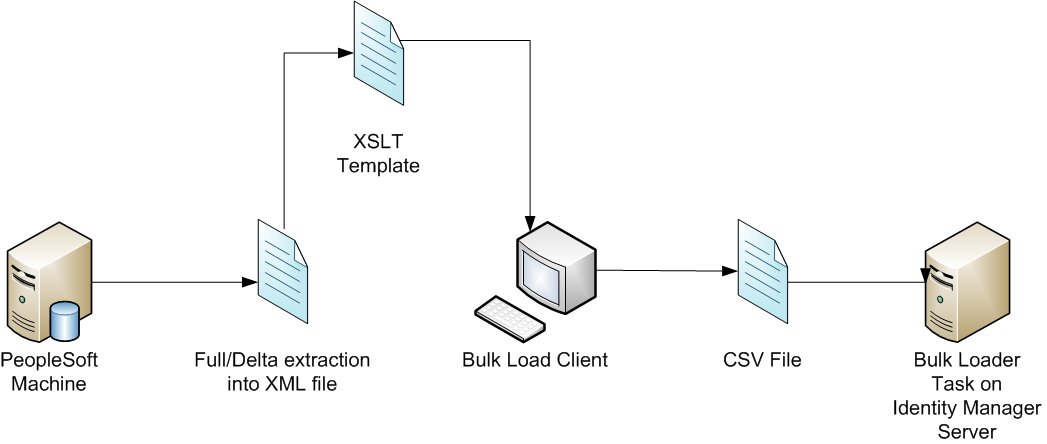

The relevant user account information is first extracted manually from the authoritative data source: for example PeopleSoft. The Bulk Load Client can work with XML or CSV input file formats. If the information is XML, the file is transformed to CSV format by the Bulk Load Client using XSL transformation. The resultant CSV file is then sent by the Bulk Load Client to the CA IdentityMinder Bulk Loader task. Based on the mapped admin tasks, users are created, modified, or deleted.
The following is an example of the Bulk Load Client cycle:

From the PeopleSoft machine:
Bulk Load Client internally transforms the XML file into CSV format required by the CA IdentityMinder Bulk Loader task. You can either write the CSV file to a disk file or use the CSV file to invoke the Bulk Loader task.
Note: The resultant CSV file can be loaded in smaller chunks.
If the CSV file has been broken up into smaller chunks, Bulk Load Client invokes the Bulk Loader task for each of the chunks. Subsequent chunks are sent to the Bulk Loader task once the SOAP response from the previous request is received and the response indicates that the previous request is submitted successfully.
The following use cases are supported for the Bulk Load Client:
|
Copyright © 2013 CA.
All rights reserved.
|
|